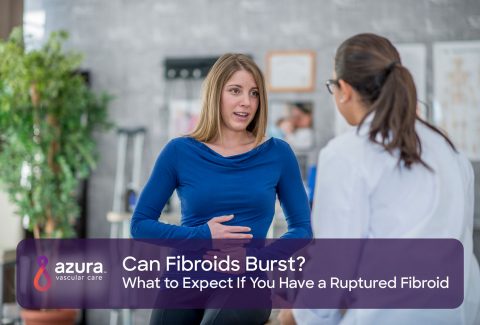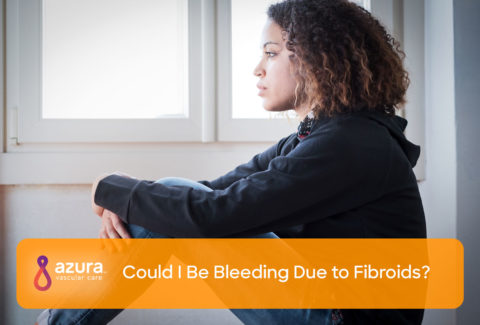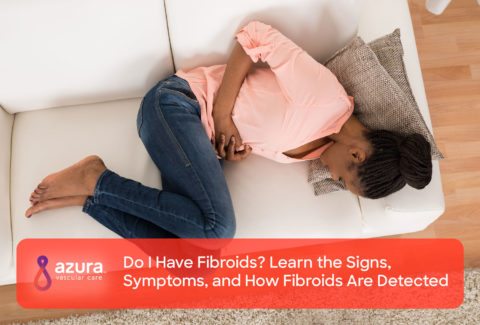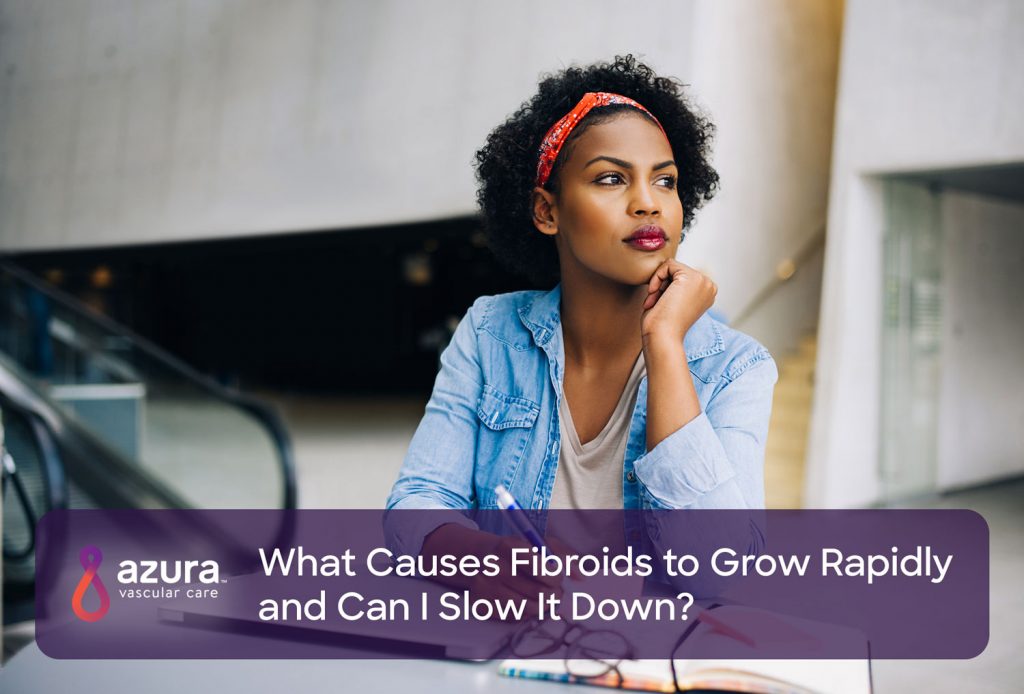
Each year, hundreds of thousands of American women undergo treatments and procedures for uterine fibroids. Fibroids are most common among women who have never been pregnant, whose mother or sister had fibroids, and who are very overweight. Prevalence is higher for African-American women, where in fact, fibroids are two to three times more common. (i)
Researchers still aren’t clear on what causes fibroids or what factors cause fibroids to grow rapidly. Read on to learn about the symptoms of fibroids, how big fibroids can grow and what may help to slow down their growth.
Uterine Fibroid Symptoms
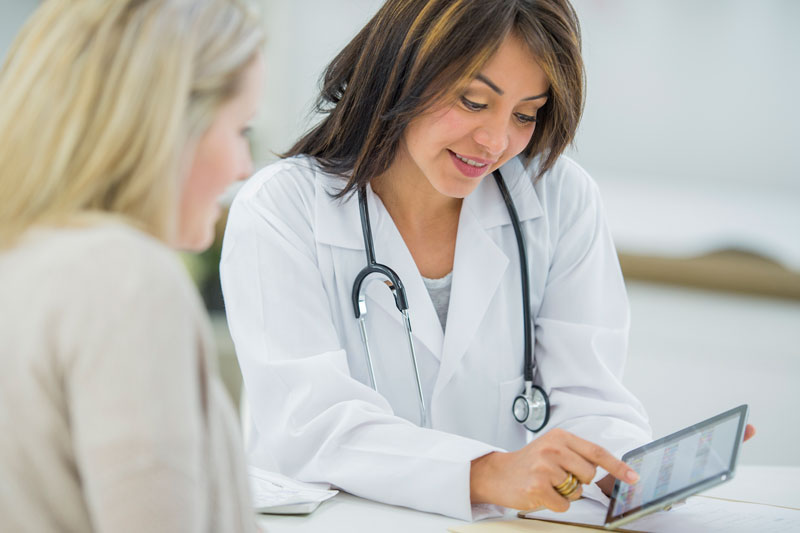 Uterine fibroids are benign (non-cancerous) tumors that grow in the uterine wall. Uterine fibroids can grow alone or in clusters, and they can be as large as a softball, or so small that they cannot be detected by the human eye.
Uterine fibroids are benign (non-cancerous) tumors that grow in the uterine wall. Uterine fibroids can grow alone or in clusters, and they can be as large as a softball, or so small that they cannot be detected by the human eye.
Uterine fibroid symptoms can include:
- Heavy menstrual bleeding
- Periods that are painful
- A bloated feeling in your pelvic region
- Lower back pain
- Painful intercourse
- More frequent urination
What May Cause Fibroids to Grow Rapidly?
Genes that accelerate the growth of uterine muscle and abnormalities in uterine blood vessels may be involved in the cause of fibroids and how quickly they grow. The presence of estrogen and possibly progesterone is also a factor. (ii) Fibroids can’t grow without these natural female hormones, which is why symptoms often stop once a woman enters menopause. (ii)
How Big Can Fibroids Grow?
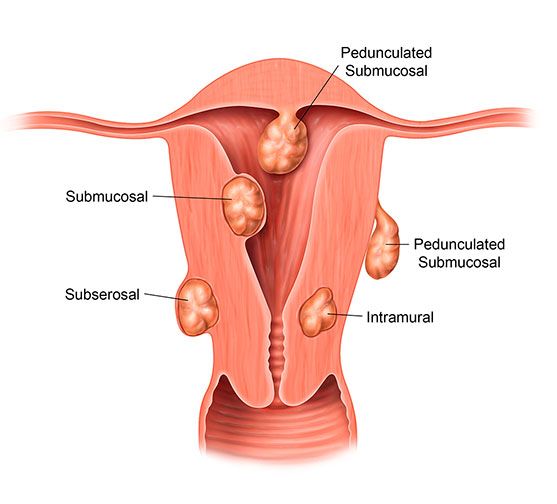
It’s difficult to predict how big a fibroid will grow or what causes a fibroid to grow rapidly. They can increase to different sizes and at different speeds in each person. (i) Some fibroids and their associated symptoms hardly change despite not having treatment. Other fibroids grow bigger with worsening symptoms over time. For others, symptoms may gradually go away on their own.
So, how big can fibroids grow? Size can range from smaller than a pea to larger than a melon. Most women with uterine fibroids have an enlarged uterus. (iii) In fact, a very large fibroid can expand the uterus to the size of a second-trimester pregnancy and press against the bowel or bladder, causing constipation or frequent urination. (ii)
Very large fibroids may cause the abdomen to swell to the point that it’s difficult for a doctor to conduct a thorough pelvic exam. (iv) Instead, women with large fibroids may choose to have an imaging study done to evaluate uterine fibroid size. Left unattended, very large fibroids can begin to degenerate or burst, even if they aren’t causing any symptoms. (v) Degeneration occurs when the fibroid outgrows its blood supply, causing the cells of the fibroid to die. This typically causes abrupt, severe pain and tenderness.
Slowing the Growth of Uterine Fibroids
There is no known treatment that prevents uterine fibroids, but you can take some precautionary steps that may slow their growth or minimize symptoms, such as adopting a fibroid-friendly diet. A study showed that women who consumed milk, cheese, ice cream, or other dairy products at least once a day were less likely to develop fibroids than women who consumed dairy less frequently. (vi) Another study showed that compounds from green tea inhibit the growth of fibroid cells and eventually increased the death rate of these cells. (vi)
Additionally, artificial hormones, such as those used in birth control pills, tend to slow fibroid growth. (ii)
If you’ve been diagnosed with fibroids, there are treatment options available depending on a number of factors, including the size, location and number of fibroids. There are minimally invasive alternatives to surgery, including uterine fibroid embolization. Of the conservative treatments for uterine fibroids, uterine fibroid embolization has the longest track record and has a significantly lower rate of major complications compared with surgery. (vii)
To learn more about this safe, effective outpatient treatment for uterine fibroids, download our free information sheet, Exploring Uterine Fibroid Treatments, or call 844-UFE-CARE (833-2273) to schedule an appointment with a vascular specialist to see if you are a good candidate.
Sources:
(i) Institute for Quality and Efficiency in Health Care. (2017, November 16). _Uterine fibroids: Overview._Retrieved June 19, 2018, from https://www.ncbi.nlm.nih.gov/pubmedhealth/PMH0072719/
(ii) Harvard Health Publishing. (2008, July). _What to do about fibroids – Harvard Health. Retrieved_June 19, 2018, from https://www.health.harvard.edu/womens-health/what_to_do_about_fibroids
(iii) Brigham and Women’s Hospital. (n.d.). _About Uterine Fibroids._Retrieved June 15, 2018, from http://www.fibroids.net/fibroids.html
(iv) American College of Obstetricians and Gynecologists. (2011, May). _Women’s Health Care Physicians. Retrieved_June 17, 2018, from https://www.acog.org/Patients/FAQs/Uterine-Fibroids
(v) University of North Carolina at Chapel Hill School of Medicine. (2016, December 02). _Minimally Invasive Gynecologic Surgery._Retrieved June 15, 2018, from https://www.med.unc.edu/obgyn/Patient_Care/specialty-services/MIGS/our-services/fibroid-tumors
(v) Bradley, J. G., MD. (2011, June 22). _Uterine Fibroids._Retrieved June 15, 2018, from http://www.obgyn.net/laparoscopy/uterine-fibroids
(vi) National Institutes of Health. (October 2010)._ Fact Sheet – Uterine Fibroids. Retrieved July 3, 2018, from https://report.nih.gov/nihfactsheets/Pdfs/UterineFibroids(NICHD,ORWH).pdf
(vii) Vilos, G. A., MD., et al. (February 2015). _The Management of Uterine Leiomyomas._Journal of Obstetrics and Gynaecology Canada, 318, 157-178. doi:10.1016/s1701-2163(16)30584-9
